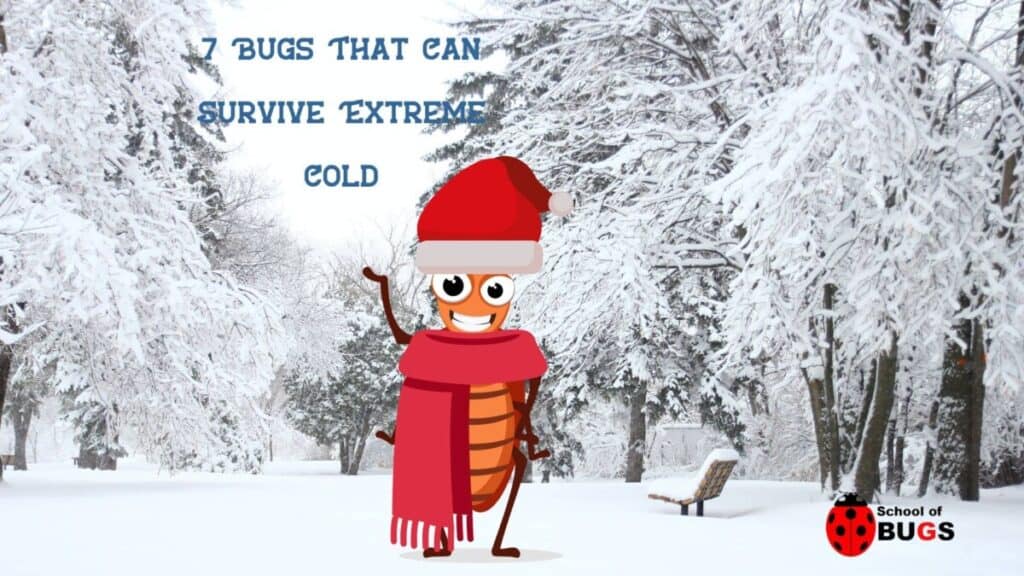
Many insects can’t survive once daily temperatures drop below 55°F. And the colder it gets, the fewer bugs live.
But certain species have well adapted to drastic changes in climate throughout the year, so even the sudden cold snaps aren’t enough to kill them off.
In this article, we’ll explore what species can survive extreme cold, as well as how they do it.
Insects That Can Withstand Extremely Low Temperatures
There are several species of insects that can survive really harsh winter weather. They use different strategies, all of which are rather amusing. Let’s see what those bugs are.
#1 Emerald Ash Borer
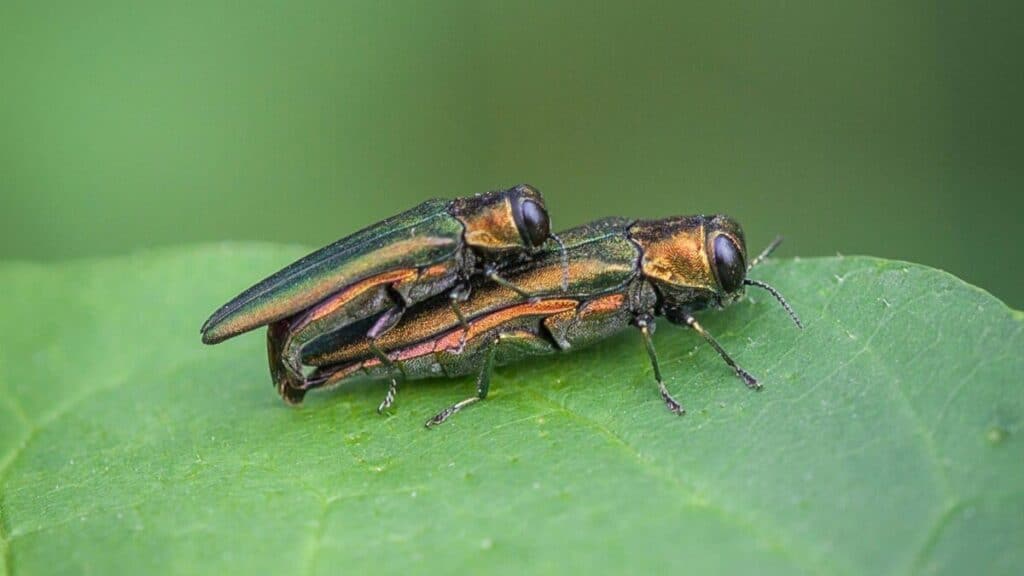
No, EAB isn’t a hip-hop group. That’s an acronym commonly used to refer to a bug commonly known as the emerald ash borer.
This is a type of metallic wood-boring beetle native to northeastern Asia. However, at some point, this bug was brought to Europe and North America, where it’s considered to be an invasive species.
This tiny green bug usually invades ash trees, so that’s where you can find them during the winter. Hidden underneath the bark, the emerald ash borer manages to overwinter thanks to the thick insulation, as well as certain antifreeze chemicals found in its body.
While it’s not almighty, this insect can withstand temperatures that are as low as -20°F. However, if they drop below that, the emerald ash borer will die from cold.
#2 Isabella Tiger Moth
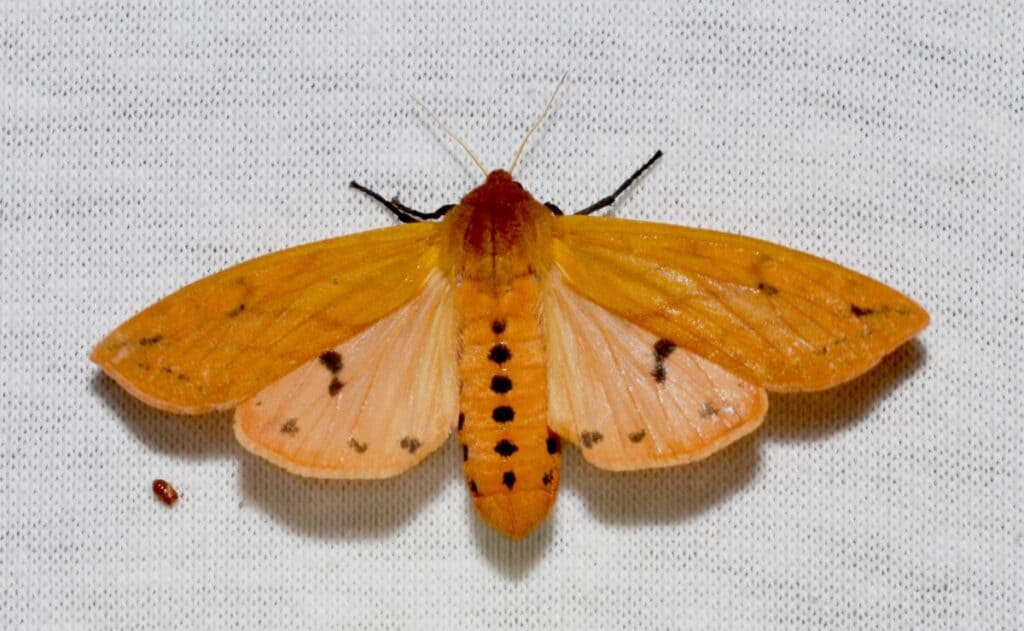
Pyrrharctia isabella is probably more known for its larval form, which is commonly called the woolly bear. This type of moth is commonly found across the United States and southern Canada, where it’s believed to be the indication of the upcoming severe winter.
You might have heard about some of the festivals held in the name of the woolly bear. In Vermillion, Ohio, there’s a huge parade with kids and pets costumed as this caterpillar.
In Kentucky, a Woolly Worm Race is held annually, where woolly bear caterpillars race up vertical strings.
This funky-looking insect can be found in cooler regions, as well as the Arctic. Now, you might think that it’s the fuzzy “fur” that helps woolly bears survive in this harsh environment. But it’s actually due to its cryokinetic ability.
The larva of this insect emerges from the egg during the fall, and by the time winter arrives, it turns into a caterpillar.
That’s some good timing involved because the caterpillar can freeze itself. First, the heart stops beating, causing all the organs to freeze solid one by one.
But the tissues continue working even while frozen, constantly producing a substance that protects the whole body from freezing damage. And once spring arrives, the caterpillar simply thaws like the area around it.
#3 Antarctic Midge
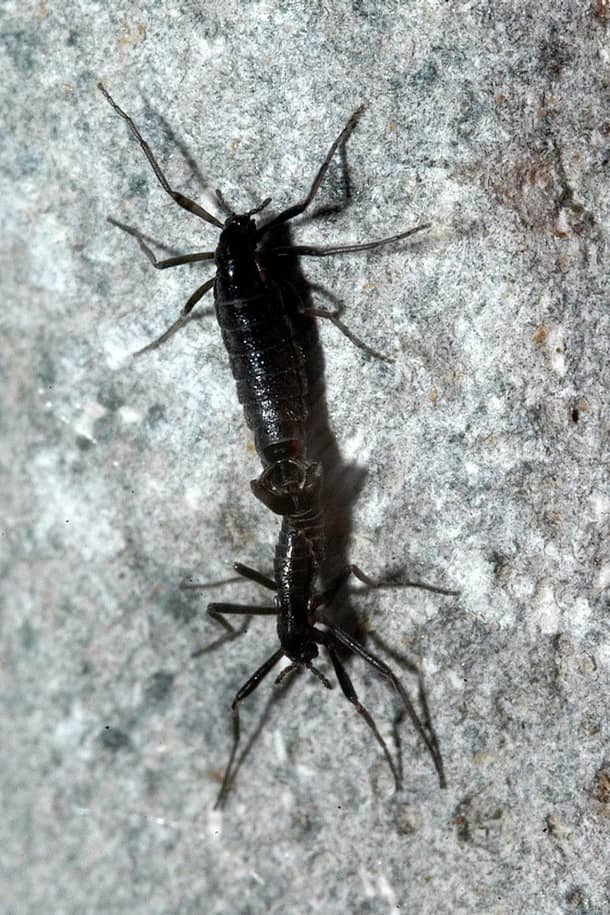
Given the name of this bug, it’s not too surprising that it’s able to withstand extreme cold. With just 0.24 inches in length, Belgica Antarctica is actually the largest purely terrestrial creature on Antarctica.
But size is not everything, as this tiny creature is the only one of its kind that can survive living in Antarctica 365 days a year.
The Antarctic midge isn’t just able to live in cold weather. This insect actually requires a harsh environment to survive. What the midge’s body does is it stocks up on sugars, which protect it from too much ice forming around.
At the same time, proteins in the body bind to hydrogen, so that the insect doesn’t lose the necessary amount of water during this period.
Interestingly enough, the Antarctic midge isn’t actually that hardened to extreme weather as we might think. Even though the temperatures go as low as -40°F, this bug can’t survive anything lower than 5°F.
But because it burrows beneath a few inches of snow, the temperature there sits comfortably around 28°F for about 10 months a year.
#4 Mountain Stone Wētā
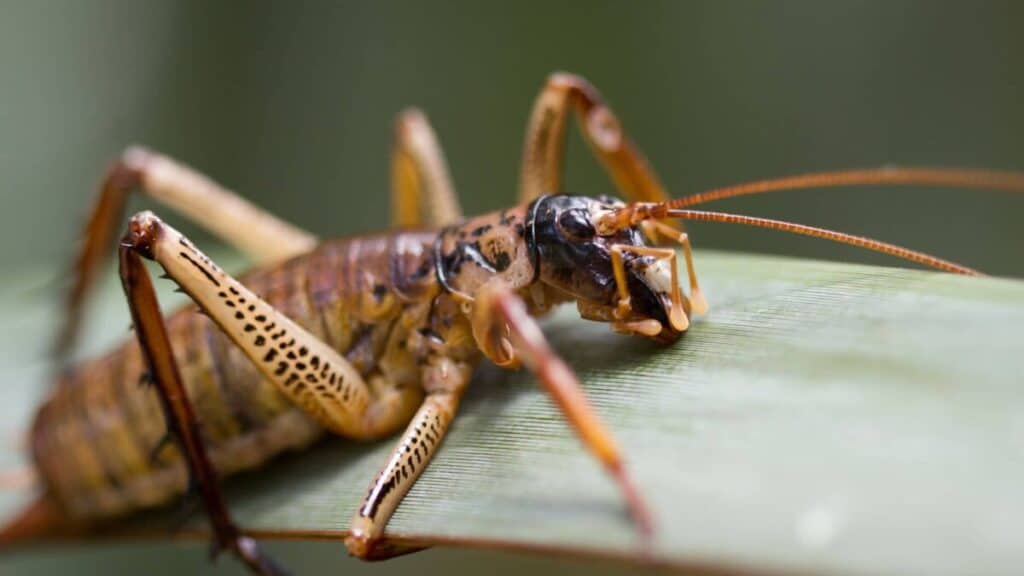
Hemideina Maori, otherwise known as the mountain stone wētā, is a large flightless cricket endemic to New Zealand. These insects are quite big, with a body length of about 2.36 inches.
White the Wētā family consists of about 70 different species, the mountain stone wētā is the only one that lives in an alpine environment, with an altitude above 3500 feet above sea level. Naturally, at this height, the weather gets harsh.
So how does this type of cricket survive in such a habitat? Well first, its body has a bigger resistance to water loss compared to its lowland cousins.
That’s partly due to the black color of the mountain stone wētā’s body. Some studies show that the body with a large amount of melanin loses less water than those with less, such as lowland crickets.
Once temperatures reach 14°F, the mountain stone wētā appears to be frozen solid. And in fact, about 85% of its body water is turned into ice.
But thanks to the high amount of amino acid and sugar deposits, the organs are protected from frost damage. And as soon as the temperature rises up, this insect will thaw and start being active again.
#5 Spiny Rose Stem Gall Wasp
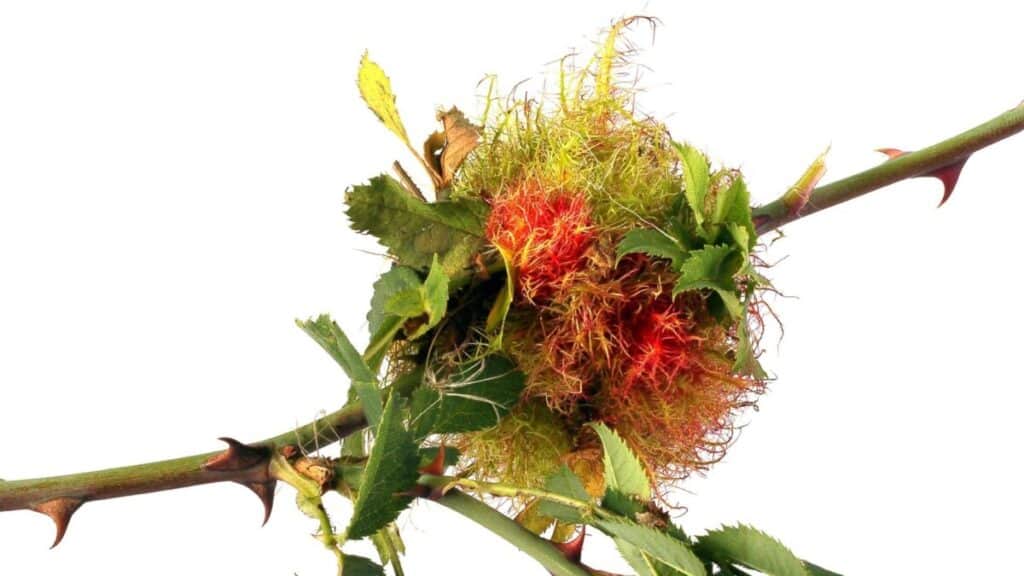
Diplolepis spinosa is a type of gall wasp endemic to wild roses of Canada. Now, there are about 50 different species in the gall wasp family, but this particular one is considered to be a pest.
What it does is it creates galls on this specific type of rose, which then serve as a host for the eggs. As soon as it hatches, the larva starts feeding on the plant, sucking all the nutrients.
The larva eats fast because it has to stock up on glycerol, which is naturally occurring alcohol. This compound is important because it helps the body attract water, which is something gall wasp will have use of during winter.
The wasp enters the prepupal stage by the end of August and it stays that way throughout the winter. The galls usually sit higher on the rose, so they’re above the snow level and exposed to harsh weather.
But because the wasp has accumulated all that glycerol, which serves as an antifreeze agent, it’s not bothered by the snow. Even the temperatures as low as -24°F isn’t enough to kill this insect.
#6 Mountain Pine Beetle
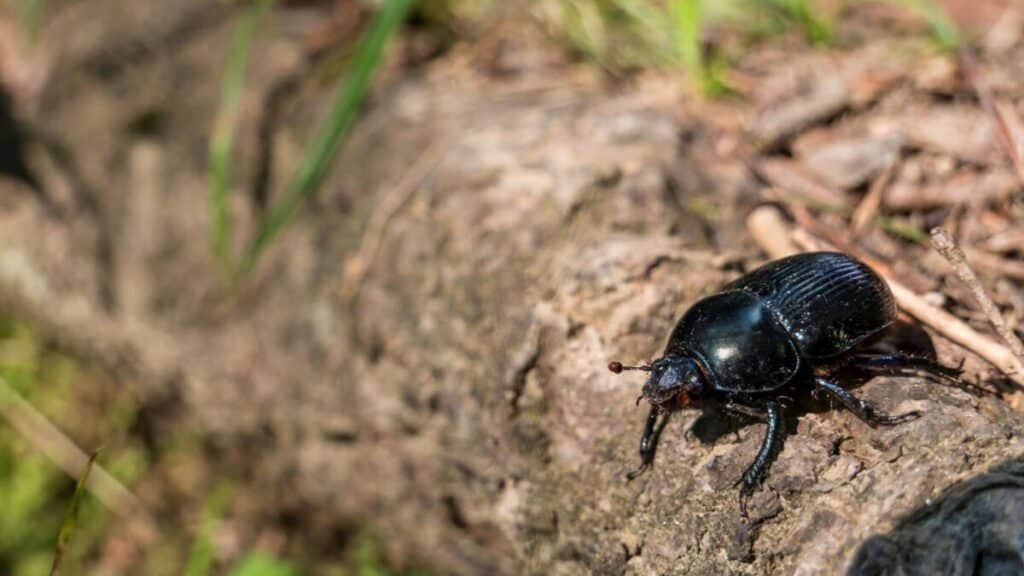
Dendroctonus ponderosae is a species of bark beetle no larger than a grain of rice. This tiny bug is endemic to forests ranging from Mexico to British Columbia, where they’re known as tree destroyers.
Normally, these beetles have an important role in the ecosystem, as their designated role is to kill off old and dry trees to make more room for the young ones.
But long summers mean longer breeding periods. So as their population grew rapidly, the devastation of the forests also increased dramatically.
But while they enjoy hot weather, these insects definitely don’t mind cold temperatures either. Fluctuations in daily temperatures are common in many parts where the pine beetles live, so that’s something they easily get used to.
That’s especially true for the pine beetles living in northern parts of British Columbia and Alberta. In these regions, temperatures can sometimes drop as low as -40°F, leaving everything frozen. But hidden underneath the bark, beetle larvae don’t mind the cold.
#7 Pea Leaf Miner
Pea leaf miner is a type of fly that was endemic to South America up to 40 years ago. But today, you can find it in any region of the world except for Australasia and Antarctica.
This type of fly is considered a pest because it feeds on most plants you might have in your garden. And when we say feed, we mean eat through them vigorously. For such a tiny fly, the pea leaf miner has a huge appetite.
This bug is quite a pain in the back for anyone that owns a garden. And unlike most insects, pea leaf miners don’t go away once the weather gets colder. As long as the temperature doesn’t go below -2°F, these bugs can easily survive.
Summing Things Up
Although the majority of insects die once temperatures drop to winter average, certain species have adapted enough to survive through extreme cold. Some go into hibernation while others produce chemicals that prevent their bodies from freezing.
Alright, that’s it for this article, here are a few hand-selected articles that you might also find interesting reads:
7 Bugs With the Most Legs – You’ll Love This7 bugs you can use to keep mosquitoes away
Common Apartment Bugs, 7 Likely Suspects
Recent Posts
Tiny Black Bugs in Bathroom NO WINGS: What They Are and What to Do!
Finding tiny black bugs in your bathroom can be uncomfortable, to say the least. Especially if they are persistent, or they appear in very large numbers, which they often like to do. When it...
Tiny Black Bugs in Plant Soil - What Are They & What To Do About It
A short horror story: You get a new houseplant. You do your best to take care of it. You’ve ensured that it has the right soil, the right amount of sun, it gets enough water. And then one day, you...

